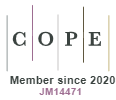Management of the noise attenuation project of a chiller in a pharmaceutical industry
DOI:
https://doi.org/10.5585/iptec.v11i2.24615Keywords:
Project management, Performance domains, Chiller, Noise, Noise pollutionAbstract
In the manufacture of drugs in the pharmaceutical industries, it is necessary to control the temperature and relative humidity of the air in the productive areas. For this task, central air conditioning systems are normally used, one of its main components being the cooling chiller, which emits high noise during operation. Thus, pharmaceutical industries may face another problem, excessive noise, causing noise pollution in the region. The objective of this technical report is to present how the results of the noise attenuation project generated by a chiller in a pharmaceutical industry were delivered. The method used was the case report (experience), where the concepts of the performance domain were applied. The work describes in detail the project phases for the solution of a noise attenuation problem of a chiller in the pharmaceutical industry. The relevance of this work is due to the fact that cooling chillers are frequently used in refrigeration systems in other industries and in commercial buildings with central air conditioning control, making it possible to use the project reported here in other industrial and building sectors for noise attenuation, benefiting the environment and the surrounding society.
Downloads
References
Agência Nacional de Vigilância Sanitária (ANVISA). Resolução da Diretoria Colegiada – RDC n° 658, de 30 de março de 2022, dispõe sobre as diretrizes gerais de boas práticas de fabricação de medicamentos. Diário Oficial da União, Poder Executivo, Brasília, DF, 31/03/2022.
Basner, M., Babisch, W., Davis, A., Brink, M., Clark, C., Janssen, S., & Stansfeld, S., (2014). Auditory and non-auditory effects of noise on health. The Lancet, 383(9925), 1325-1332.
Berglund, B., Lindvall, T., Schwela, D. H., & World Health Organization. (1999). Guidelines For Community Noise.
Biancolino, C. A., Kniess, C. T., Maccari, E. A., & Rabechini Jr., R. (2012). Protocolo para Elaboração de Relatos de Produção Técnica. Revista Gestão e Projetos, 3(2), 294-307. Disponível em: https://periodicos.uninove.br/gep/article/view/9467
Bourne, L., & Walker, D. H. T. (2005). The paradox of project control. Team Performance Management, 11(5–6), 157–178. https://doi.org/10.1108/13527590510617747
Carvalho, M. M. D., & Rabechini Junior, R. (2023). Fundamentos em gestão de projetos: construindo competências para gerenciar projetos. Atlas, São Paulo.
De Oliveira, F. G., & Rabechini, R. (2019). Stakeholder management influence on trust in a project: A quantitative study. International Journal of Project Management, 37(1), 131–144. https://doi.org/10.1016/j.ijproman.2018.11.001
Energy U S Department. (2018). Commercial Buildings Energy Consumption Survey. U.S. Energy Information Administration, October, 1–269.
Héroux, M. E., Babisch, W., Belojevic, G., Brink, M., Janssen, S., Lercher, P., Paviotti, M., Pershagen, G., Waye, K. P., Preis, A., Stansfeld, S., van den Berg, M., & Verbeek, J. (2015). WHO environmental noise guidelines for the European Region. Euronoise 2015, 2589–2593.
Kerzner, H. (2017). Project Management Metrics, KPIs, and Dashboards: A Guide to Measuring and Monitoring Project Performance. John Wiley & Sons.
Khasawneh, O. F. S., Halim, H., Abdullah, S. N., Razali, S. A., Algburi, H. R. F., & Salleh, A. H. (2020, September). Characterization of Environmental Noise Pollution Based on Noise Measurement and Mapping at USM Engineering Campus. In IOP Conference Series: Materials Science and Engineering, 920 (1), 012004). IOP Publishing. https://doi.org/10.1088/1757-899X/920/1/012004
Martens, C. D. P., Pedron, C. D., & Oliveira, J. C. (2021, jul./dez.). Editorial. Diretrizes para elaboração de artigos tecnológicos, artigos aplicados ou relatos técnicos de produção com ênfase profissional. Revista Inovação, Projetos e Tecnologias - IPTEC, São Paulo, 9(2), 143-147. https://doi.org/10.5585/iptec.v9i2.21117
Monteiro, M., Carvalho, D., Patah, L. A., & Bido, D. D. S. (2015). Project management and its effects on project success: Cross-country and cross-industry comparisons. International Journal of Project Management, 33(7), 1509–1522.
Project Management Institute - PMI. (2021). PMBOK Guide 7th edition. In Project Management Institute, Inc. 14 Campus Boulevard Newtown Square, Pennsylvania, USA.
Provdanov, C. C., & Freitas, E. C. De. (2013). Metodologia do trabalho científico: métodos e técnicas da pesquisa e do trabalho acadêmico. Novo Hamburgo: Feevale. https://doi.org/10.1017/CBO9781107415324.004
Rabechini Jr, R., Carvalho, M. M. D., & Laurindo, F. J. B. (2002). Critical factors for implementing project management: the case of a research organization. Production, 12, 28-41.
Rabechini Junior, R., & Carvalho, MMD (2013). Relationship between risk management and project success. Production, 23, 570-581.
Shenhar, AJ, & Dvir, D. (2010). Reinventing Project Management: The Diamond Approach to Successful Growth and Innovation. São Paulo: M. Books.
Tripathy, D. P. (2008). Noise pollution. APH Publishing. New Delhi, India.
Turner, J. R., & Müller, R. (2005). The Project Manager’s Leadership Style as a Success Factor on Projects: A Literature Review. Project Management Journal, 36(2), 49-61.
Wieringa, R. J. (2014). Design Science Methodology for Information Systems and Software Engineering. London: Springer-Verlag Berlin Heidelberg.
Downloads
Published
How to Cite
Issue
Section
License
Copyright (c) 2023 Revista Inovação, Projetos e Tecnologias

This work is licensed under a Creative Commons Attribution-NonCommercial-ShareAlike 4.0 International License.
- Abstract 253
- pdf (Português (Brasil)) 198






